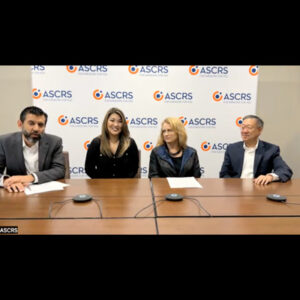ONLINE EXCLUSIVE
Refractive
July 2023
by Liz Hillman
Editorial Co-Director
A National Institutes of Health (NIH)-funded trial in the U.S. sought to evaluate the effect of low-dose atropine drops on slowing myopia in a pediatric population and found, ultimately, an “absence of treatment benefit.” This is unlike other studies, such as that involving children in East Asia, that did show a positive effect of low-dose atropine reducing progression.

Source: NEI
Pediatric myopia has been described as an epidemic, with the World Health Organization estimating that its prevalence is expected to increase from 2.6 billion individuals living with myopia in 2020 to 3.36 billion in 2030.
“The overall mixed results on low-dose atropine show us we need more research,” Michael Chiang, MD, director of the National Eye Institute (NEI), said in a press release. “Would a different dose be more effective in a U.S. population? Would combining atropine with other strategies have a synergistic effect? Could we develop other approaches to treatment or prevention based on a better understanding of what causes myopia progression?”
The study, published in JAMA Ophthalmology, randomized 187 children age 5–12 years old 2:1 to receive one drop of 0.01% atropine or one drop of placebo in one eye nightly for 24 months, followed by 6 months of observation. The authors reported that the atropine treatment did not slow myopia progression or axial elongation. “These results do not support use of atropine, 0.01%, eye drops to slow myopia progression or axial elongation in U.S. children,” the authors wrote.
As the NIH press release noted, stronger concentrations of atropine drops have been used off-label to treat myopia progression and are effective but come with unwanted side effects, such as light sensitivity or blurred near vision.
One of the study’s lead co-authors, Michael Repka, MD, said in a statement that “absence of a treatment benefit in our U.S.-based study, compared with East Asian studies, may reflect racial differences in atropine response.”
“It’s possible that a different concentration of atropine is needed for U.S. children to experience a benefit,” Katherine Weise, OD, the study’s other lead co-author, said in the press release. “Clinical researchers could evaluate new pharmaceuticals and special wavelengths of light in combination with optical strategies, like special glasses or contact lenses, to see what works in reducing the progression of myopia.”
She added that she thinks “it will take a real convergence of eye research to solve the environmental, genetic, and structural mystery of myopia.”



